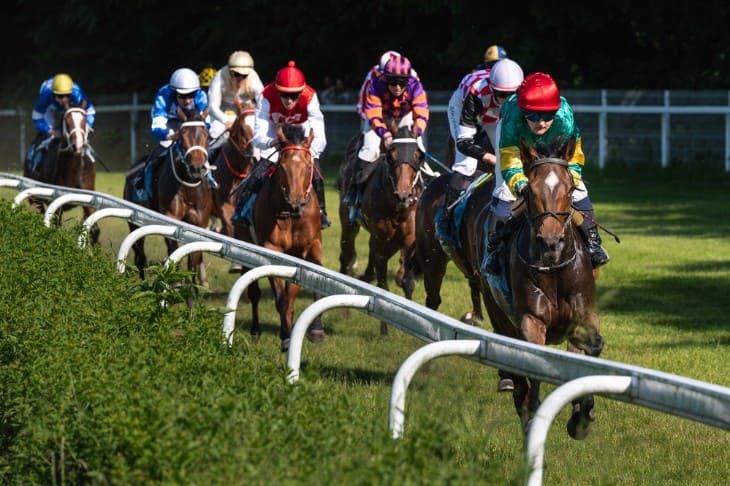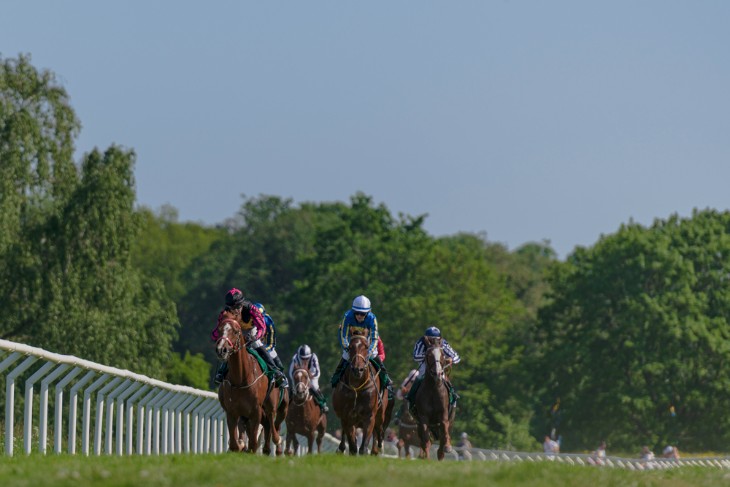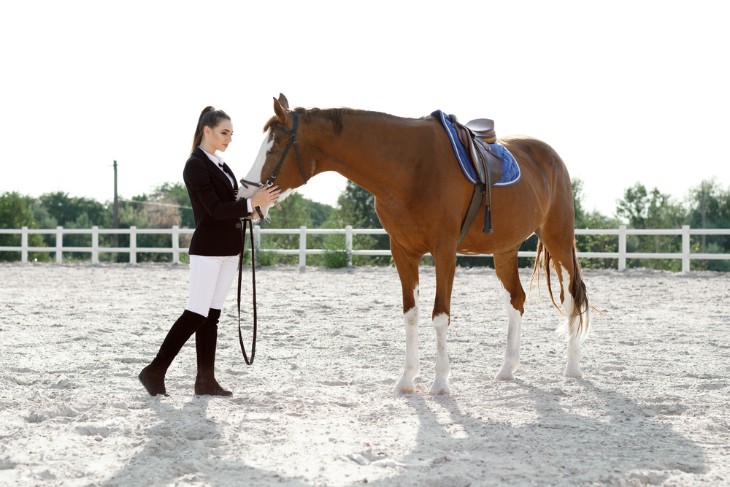- Understanding Horse Racing Scopes
- The Role of Scoping in Horse Health
- Identifying a Dirty Scope
- What is a dirty scope in horse racing: Causes
- Impact on Horse Racing Performance
- Misconceptions
- Preventing Dirty Scopes in Horses
- Cleaning and Maintenance Procedures
- Maintaining Horse Respiratory Health
- Importance of Regular Scoping
- Scope Results and Racing Regulations
- Case Studies of Dirty Scopes
- Conclusion
Understanding Horse Racing Scopes
In the realm of horse racing, the term "scope" holds a significant place in ensuring the health and performance of these magnificent creatures. To begin comprehending what a "dirty scope" entails, one must first grasp the fundamental concept of a horse racing scope. A scope, in this context, refers to an endoscopic examination of a horse's respiratory tract, primarily the upper airways.
What is a dirty scope in horse racing? During a scope procedure, a veterinarian employs an endoscope, a slender, flexible tube equipped with a light and a camera, to visually inspect the horse's nasal passages, throat, and larynx. This procedure allows for a comprehensive evaluation of the horse's airway, helping to diagnose any issues that may affect its breathing and, consequently, its racing performance.
The importance of scoping lies in its ability to detect various conditions that could hinder a horse's ability to perform optimally on the track. This includes identifying obstructions, infections, or abnormalities within the airway that may cause coughing, reduced airflow, or exercise intolerance. By conducting regular scopes, trainers and owners can maintain a clear understanding of their horse's respiratory health and take corrective measures when necessary, ensuring peak racing performance.
The Role of Scoping in Horse Health
Scoping is crucial in assessing and ensuring the respiratory health of horses, a practice that is significant not just in competitive racing. It helps in identifying the state of the horse's respiratory system:
- A "clean scope" means the horse's respiratory tract is free of obstructions, inflammation, or irregularities, indicating a healthy respiratory system.
- A "dirty scope" signals potential issues in the horse's airways, such as mucus accumulation, inflammation, ulcers, or growths, necessitating further investigation and intervention to address these problems.
Identifying a Dirty Scope
The detection of a dirty scope in horse racing is a critical task that requires careful observation and a deep understanding of the endoscopic images. The process involves:
- Looking for Excess Mucus: A key sign of a dirty scope is the presence of excess mucus or secretions in the airway. This can hinder airflow and cause breathing issues, especially during physical exertion such as racing.
- Identifying Inflammation or Irritation: Redness or swelling in the throat or larynx is another common indicator. It may suggest underlying problems like infections or reactions to allergens or environmental pollutants.
Early identification of these issues is essential for timely intervention and treatment, which helps in restoring and maintaining the horse's respiratory health.

What is a dirty scope in horse racing: Causes
A dirty scope in horse racing can be attributed to various factors, each contributing to the horse's respiratory health issues:
- Respiratory Infections: Conditions like equine influenza or strangles often increase mucus production and cause airway inflammation. These infections are highly contagious, necessitating quarantine measures to control their spread.
- Environmental Factors: Exposure to dusty or polluted environments increases the risk of inhaling irritants, leading to respiratory problems. Allergens such as pollen or mold spores in the surroundings can also trigger allergic reactions, causing respiratory tract inflammation.
- Stress from Training and Racing: The intense demands of training and racing can compromise a horse's immune system, making them more prone to respiratory issues. To prevent such problems, it is vital to ensure the horse has adequate rest, proper nutrition, and a clean living environment.
Impact on Horse Racing Performance
The influence of a dirty scope on a horse's racing capabilities is a critical concern for those involved in the sport. Its implications include:
- Reduced Performance: A compromised respiratory tract impairs the horse's ability to breathe efficiently, leading to lower oxygen levels and diminished stamina. This often results in slower race times and decreased competitiveness.
- Risk of Injury: Horses struggling with respiratory issues might overexert themselves, increasing the likelihood of injuries.
- Visible Symptoms: Horses affected by respiratory problems may show signs like coughing or wheezing during races, indicating a need for immediate attention and treatment.
- Financial Implications: Owners face significant investments in training and racing. A horse with respiratory issues may not provide expected returns, underlining the importance of promptly addressing scope problems.
Misconceptions
- Severity of Dirty Scopes: It's a misconception that a dirty scope is a minor issue. Neglecting it can lead to deteriorating health and higher treatment costs over time.
- Causes of Respiratory Issues: Another common fallacy is attributing all respiratory problems in horses to allergies or infections. Various factors, including airway structural anomalies, also play a role. Understanding these complexities ensures accurate diagnosis and treatment.
Preventing Dirty Scopes in Horses
To maintain horse health and enhance racing performance, preventing dirty scopes is essential. Key measures include:
- Stable Management and Environmental Control: A clean, dust-free stable environment minimizes exposure to respiratory irritants and allergens. This involves regular cleaning of stables, ensuring good ventilation, and using suitable bedding materials.
- Adequate Nutrition and Hydration: A balanced diet bolsters the immune system and overall health, reducing the risk of infections and respiratory problems. Proper hydration is vital for maintaining a protective mucus layer in the respiratory tract.
- Structured Exercise and Training: A carefully planned training regimen that builds fitness gradually can help avoid stress-induced respiratory issues. Avoiding overexertion is important to prevent weakening the immune system and increasing susceptibility to infections and inflammation.
These preventive strategies play a crucial role in safeguarding horses from respiratory issues that lead to dirty scopes, thereby ensuring their wellbeing and optimal performance in racing.
Cleaning and Maintenance Procedures
Ensuring the cleanliness and proper maintenance of equipment used for scoping is vital in preventing dirty scopes in horses. Key practices include:
- Thorough Cleaning and Disinfection of the Endoscope: After each use, the endoscope must be meticulously cleaned and disinfected. This step is crucial to avoid cross-contamination between horses.
- Application of Sterile Techniques: Employing sterile procedures ensures that the scope does not introduce any harmful bacteria or foreign particles into the horse's airway during examinations.
Maintaining Horse Respiratory Health
Regular Veterinary Check-ups: Routine health assessments by a veterinarian play a significant role in maintaining respiratory health and preventing dirty scopes.
Adherence to Vaccinations and Deworming Protocols: Following a veterinarian's recommended schedule for vaccinations and deworming helps reduce the risk of infections that could contribute to respiratory issues.
These measures, focusing on both equipment hygiene and horse health management, are fundamental in minimizing the occurrence of dirty scopes and maintaining the respiratory wellbeing of horses.
Importance of Regular Scoping
Regular scoping is a crucial aspect of maintaining the respiratory health of racehorses. Its key benefits include:
- Early Detection of Issues: Regular scoping allows for the proactive monitoring of respiratory health, facilitating the early identification and treatment of potential problems before they worsen.
- Tailored Scoping Frequency: The frequency of scopes should be based on factors like the horse's age, activity level, and health history. Young racehorses might require more frequent scoping to monitor the development of their respiratory systems and to spot early signs of issues.
- Age-Related Considerations: As horses age, they may become more susceptible to respiratory problems, underscoring the need for consistent scoping in their health management plans.
- Collaboration Between Trainers and Veterinarians: Establishing an individualized scoping schedule for each horse is typically a collaborative effort between trainers and veterinarians.
Routine scoping is not just about identifying issues; it's also invaluable for tracking a horse's respiratory health over time. Establishing a baseline for what is normal for each horse enables quick recognition of any deviations, ensuring prompt and appropriate intervention. This practice is integral to the horse's health and success in racing.
Scope Results and Racing Regulations
In horse racing, the results of scoping are critical and are governed by strict regulatory standards to uphold the sport's fairness and integrity:
- Guidelines for Racing Eligibility: Racing authorities have specific guidelines defining acceptable scope results for race eligibility. These standards help maintain an equitable competition environment and prevent horses with serious respiratory problems from participating in races.
- Disqualification for Severe Respiratory Issues: Horses displaying significant respiratory issues during scoping may be temporarily disqualified from racing. These regulations often stipulate that a horse must pass a clean scope examination within a certain period before being allowed to race, ensuring they compete in optimal respiratory health.
- Influence on Handicapping and Betting: Clean scope results can also affect how horses are handicapped and rated, which in turn influences betting odds and race outcomes. Horses with documented respiratory issues might receive different weight allowances or ratings compared to those with clean scopes.
These regulations around scoping ensure that only horses in good respiratory health participate in races, fostering a fair and competitive environment in the sport.

Case Studies of Dirty Scopes
Understanding the real-world consequences of dirty scopes in horse racing can be best illustrated through case studies:
- Case of Rapid Performance Decline:
Situation: A previously successful racehorse began to perform poorly, consistently finishing at the lower end of the field.
Diagnosis: Scoping revealed a significant accumulation of mucus in the upper airways, causing obstruction.
Intervention: The horse was treated with methods to clear the mucus and anti-inflammatory medications.
Outcome: There was a notable improvement in performance, underscoring the value of early detection and treatment. - Case of Recurrent Respiratory Infections:
Situation: A horse experienced repeated bouts of respiratory infections, leading to chronic airway inflammation.
Approach: A comprehensive strategy was adopted, focusing on enhanced stable cleanliness, robust vaccination schedules, and customized nutrition.
Result: These interventions led to a decrease in infection frequency and improved scope results.
These case studies highlight the critical role of scoping in identifying and addressing respiratory issues in racehorses, ultimately impacting their health and performance. Early intervention and a holistic approach to horse care are key factors in managing and preventing dirty scopes.
Conclusion
So, What is a dirty scope in horse racing? the concept of a "dirty scope" in horse racing encompasses a range of respiratory issues that can compromise a horse's performance and well-being. From identifying the signs of a dirty scope to preventing its occurrence through meticulous management, nutrition, and regular scoping, every aspect of this topic is vital for those involved in the sport.
In the world of horse racing, where every fraction of a second counts, maintaining a horse's respiratory health at its peak is not only a matter of sporting success but also a fundamental responsibility towards these magnificent athletes.
For more information:








